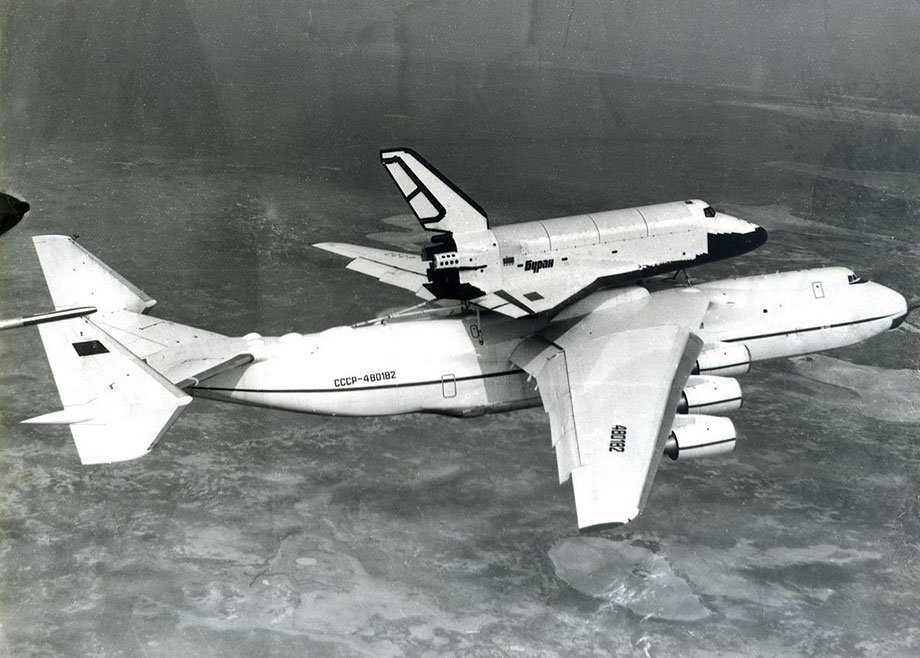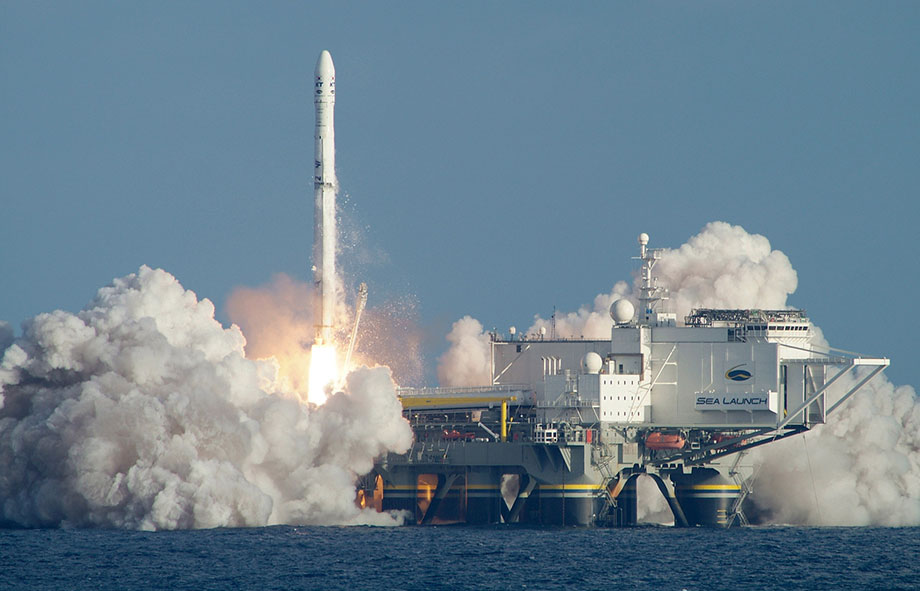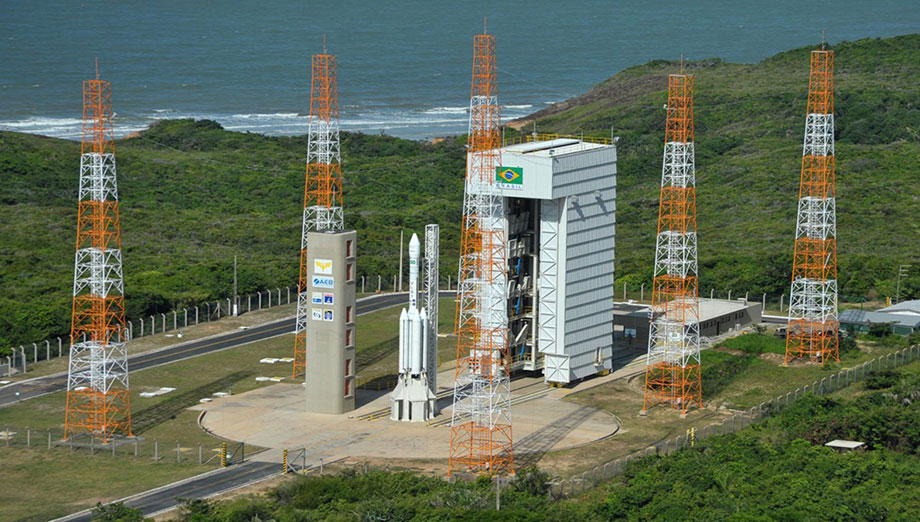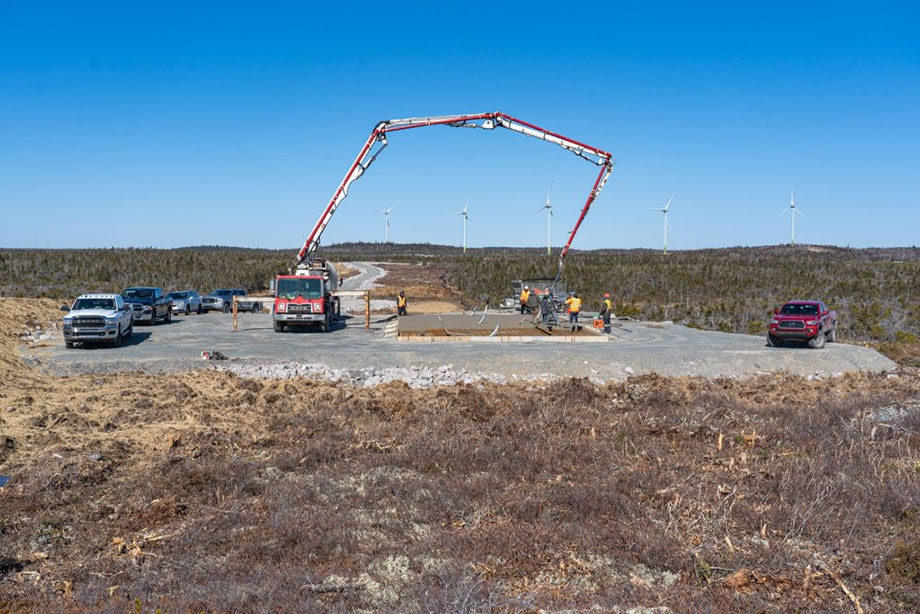The triumphs of Soviet space would never have taken place without the participation of Ukraine. The main ideological inspiration of the Soviet rocket program, Serhii Korolyov, was born in Ukraine’s Zhytomyr Oblast, and it was in the workshops of Ukrainian design bureaus and machine-building plants (primarily Dnipro’s Yuzhmash/Pivdenmash and the Yuzhnoye/Pivdenne Design Bureau) that almost a third of the USSR’s entire rocket industry was born: on-board automation, flight control systems, satellites, rocket stages and engines.
After the collapse of the Soviet Union, the now-independent Ukraine had at its full disposal the entirety of the former Soviet space and rocketry infrastructure that was on its territory at the time of Belovezhskaya Agreement which dissolved the USSR. Despite great hopes, this legacy turned out to be one of the heaviest burdens of Ukraine’s path to modernizing its aerospace industry.
Starting one’s own space program: is everything going according to plan?
On February 29, 1992, the National Space Agency of Ukraine (now the State Space Agency) was created by presidential decree. Since 1999, NSAU has been subordinated to 20 different enterprises and factories involved in the production of rocket and space products.
Ukraine’s first national space program existed from 1992 to 1997. Volodymyr Horbulin, the founder of the National Space Agency of Ukraine, was behind its development. To maintain the country’s status of a space power, the National Space Program of Ukraine (NKPU) proposed developing three main domains:
- Development of space technologies, primarily including satellite telecommunications and navigation technologies, as well as technologies for remote sensing of the Earth (civilian satellite surveillance).
- Development of the country’s own spacecraft, namely launch vehicles, satellites, and other design modules that could be used in space.
- Development and study of using spacecraft for military and national security purposes, which due to Ukraine’s status as a peaceful geopolitical player, received the least attention (in terms of activity, to say nothing about budgets).
Budget funds were mainly allocated for personnel training, financing government orders for space equipment, and research activities. The program proposed pushing for Ukraine’s participation in international space projects, as well as developing and modernizing the country’s own rockets, vehicles, and ground-based space infrastructure. The National Space Agency was given the ability to conclude international contracts (in accordance with Ukrainian legislation) to meet its needs in space activities.
According to the provisions of the 1996 Law of Ukraine “On Space Activities,” the country was to agree on a five-year state action program for the development of its own space sector, which would then be subject to the approval of the Verkhovna Rada and agreement from the Cabinet of Ministers.
Even at this early stage, it was clear that despite the Ukrainian national space program’s goals being well formulated on paper, this obscured a great many obstacles within. Firstly was the problem, as was the case in Soviet times, that all of the country’s space industry assets were completely appropriated by the state. Post-Soviet Ukraine could not independently secure the required number of government orders to expand its rocket industry. Its sluggish policy for establishing international ties, along with strong competition in the market, also led to a shortage of foreign orders. As a result, machine-building enterprises capable of producing rocket and satellite products mostly remained idle and were unprofitable for the state.

Photo: Kennedy Space Center
In order to break this vicious circle, Ukraine needed to participate in global space initiatives. Ukraine only achieved this good fortune in 1997 (not only because Ukrainian astronaut Leonid Kadenyuk went into space that year), along with the start of the international project for the construction of the Sea Launch floating spaceport. This project could bring not just large orders for the production of Ukrainian rockets, but also useful experience in building and launching from sea platforms.
Lack of a Ukrainian spaceport: Sea Launch and Zenit-3SL
One of the biggest problems of the Ukrainian space sector (which still remains relevant today) is the lack of the country’s own spaceport. Accordingly, all past launches of Ukrainian rockets were carried out from leased launch sites, mainly from Kazakhstan’s Baikonur, Russia’s Plesetsk, and sometimes from the launch pad of the Kennedy Space Center at Cape Canaveral (from which the Ukrainian Sich 2-30 was launched on the American Falcon 9 rocket).
Without its own spaceport, one interesting alternative for Ukraine could be the development of an infrastructure for horizontal space launches, when a launch vehicle is launched from an aircraft taking off from a conventional runway.
In support of this opinion, we can consider the experience of the American horizontal take-off LauncherOne launch vehicle for launching small satellites into low Earth orbits. After starting work on the rocket back in 2007, Virgin Galactic engineers spent over 13 years improving the technology, and even carried out four successful (out of six completed) rocket launches from a suspension system located under the wing of a Boeing 747-400 aircraft. And although horizontal space launches still represent a very small share of the market, the technology remains a viable alternative for countries without their own spaceport.

In 1994, a two-stage multi-purpose aerospace system was developed based on the An-225, in which the Mriya was intended to be used for horizontal space launches. The project was presented at the Eureka 94 World Exhibition of Inventions, Scientific Research and Industrial Innovation in Brussels. However, despite the impression made and the surprise of the audience, Ukraine never received a single order for the development of its space launch system. In subsequent years, the Mriya was no longer used for its intended purpose, turning into a purely transport aircraft.
Luck came to Ukraine from the other side. In 1995, the National Space Agency of Ukraine joined the Sea Launch initiative, which was founded by several global heavyweights in the rocket and space industry: the American Boeing, the Norwegian Kvaerner, the Ukrainian Yuzhnoye Design Bureau with the Yuzhmash plant and the Russian corporation Energy. The lion’s share of the capital was of Western origin, with Boeing contributing 40% of the funds and Kvaerner providing 20%.
The main goal of the Sea Launch project was to build a floating ocean platform for commercial rocket launches. The launch site had to be located near the equator, and its design would allow the launch of a heavy 3-6 ton payload into orbit. It was one of the most ambitious space projects of the late twentieth century.
For Ukraine, it was also a very good opportunity to gain much-needed experience in the construction of floating launch pads, as well as a chance to end its dependence on other countries’ spaceports. Sea Launch was a purely private business project, without a penny of government funding.
The Norwegian Kvaerner would build the offshore platform (an oil production platform was modified for this purpose), as well as a command vessel, the Sea Launch Commander, which was supposed to serve as a space launch control center. Boeing was responsible for the development of the payload module, and the Russian company Energia was involved in the development of rocket engines. The Yuzhnoye design bureau and the Yuzhmash plant, in turn, were to build the rocket itself.
The Ukrainian two-stage Zenit-2 rocket was a perfect fit for the space launch infrastructure proposed by Sea Launch. But first the rocket had to be improved. Its updated version received one more stage and was subsequently presented as the Zenit-3SL. The Yuzhmash contract for the production of 20 Zenit-3SL rockets amounted to $625 million. This was the first truly great commercial success of Ukrainian space after the collapse of the Union.

Over the course of two decades, Sea Launch experienced a number of truly remarkable moments and successful missions, but it suffered an unfortunate fate. In 2009, the company announced that it was entering Title 11 bankruptcy and reorganization proceedings in the US. Among the main reasons for bankruptcy was the platform’s inability to increase the number of its launches, because initially it was planned to carry out 2-3 in a row, but no such technical solution was ever proposed. As a result of the slowdown in space launches, Sea Launch’s maintenance costs gradually began to exceed revenues. However, even after bankruptcy, the platform has remained afloat.
Russia, as is its habit, “ate” all the company’s shares during its reorganization in 2010, receiving 97% of the business. However, having lost access to Ukrainian Zenit rockets after the annexation of Crimea and the start of the hybrid war in 2014, it could conduct only one last rocket launch. To solve this problem, the Russians intended to convert their Soyuz-5 rockets for space launches from the platform, but these plans never panned out.
Russia finally froze launches from the offshore platform in 2020, and not only in a figurative sense. The floating launch pad was towed to the Slavyanka port in the Primorsky Territory (southwest of Vladivostok) on March 25, 2020. This location is still listed today as the home port of one of the most ambitious floating spaceports of the past. According to a statement by the management of S7 Space Transport Systems (the current owner of the platform), maintaining a floating platform in the port costs the company $1 million per month. Russian foreign policy has done everything possible to ensure that Sea Launch is forever frozen in the ice of an abandoned port on the easternmost outskirts of the Russian sub-empire. Overall, it is a classic and very indicative story of the Russian Federation’s participation in international projects.
The ideological successor to Sea Launch was to be the Land Launch initiative, whose concept appeared in January 2004. The initiative proposed launching a payload weighing up to 4 tons not from the sea, but from the land launch pad of the Baikonur spaceport, using Zenit-2SLB, Zenit-3SLB, and Zenit-3SLBF Ukrainian launch vehicles. In addition to Russia and Ukraine, the United States also joined the project. Between 2008 and 2017, seven successful launches were carried out (mainly using AMOS, Intelsat, MEASAT satellites), but Russia’s aggression completely ruined these plans, effectively cutting off access to Ukrainian launch vehicles (the 2017 launch was carried out on a Zenit-3SLBF rocket, manufactured and delivered to Russia before 2014).
Brazil’s Alcantara: a black hole for Ukraine’s space budget
Ukraine’s second attempt to get its own launch pad for space launches is connected with the Brazilian Alcantara spaceport. Construction of the spaceport in the equatorial zone of Brazil began in 1982, and the first rocket launch was carried out there in 1990. Despite the repeated holding of space launches, the infrastructure at the spaceport was either completely absent (there was no sea port nor airport at the spaceport), or was in very poor condition. In fact, even at the beginning of the 2000s, Alcantara remained a major unfinished cosmic project.

However, this did not prevent Ukraine from attracting its own funding to the rather dubious long-term construction project. In 2003, during the tenure of President Leonid Kuchma, an agreement was concluded between the leadership of Ukraine and Brazil to cooperate in completing new launch pads at the spaceport, from which launches of Ukrainian launch vehicles were to take place. According to the terms of the agreement, Ukraine was to build the Cyclone-4 launch vehicle (an ideological successor to the Soviet Cyclone-3 rocket) by 2006, and Brazil was to create all the necessary infrastructure for its launch (this included an airport and seaport) at its spaceport, as well as a space flight control center and command post. Ukraine’s share of investments in this ambitious project initially amounted to $240 million, and a Ukrainian-owned company was even founded to service future launches. The Brazilian consortium was called Alcantara Cyclone Space.
However, political and economic turbulence in both countries constantly delayed both the development of the Ukrainian rocket and the commissioning of new spaceports. Alcantara turned into a real black hole for both budgeted money and loans, which Yuzhmash took from foreign banks to build a test prototype of Cyclone-4. At the beginning of the project’s second decade, the bureaucratic war within the Alcantara Cyclone Space over the distribution of responsibilities among the participating countries became especially acute. This was the beginning of the end.
Brazil put an end to it – in 2015, the country unilaterally withdrew from the agreement and liquidated the common consortium, completely ceasing contacts with its Ukrainian counterparts. Later, the Yuzhnoye Design Bureau and Yuzhmash estimated their losses from participation in the project at $800 million.
As for the Cyclone-4, which never took flight, remained as a test model at the time Brazil left the project. In order not to curtail the program at the final stage of development, in 2017 Yuzhnoye SDO turned to a Canadian company with American roots – Maritime Launch Services (MLS). It was decided to upgrade the rocket to the Cyclone-4M version, and starting in 2018, launch it from the Canadian Canso spaceport in Nova Scotia.
Unfortunately, in this almost happy story of saving the potential of Cyclone-4, there was one nasty “but” – as in the case with the Brazilians, at the time of the agreement, MLS did not have its own spaceport in Canada, but was only planning its construction. Subsequent bureaucracy led to MLS receiving permission to build the launch site only in August 2022, with construction only beginning that September. So far, it is sure that the Ukrainian Cyclone-4M will not take off from Canso until at least 2025.

Photo: Maritime Launch Services
However, MLS itself continues to believe in its project. The company plans to use the Cyclone-4M as its main rocket to deliver payloads into orbit and conduct up to eight launches per year.
Since independence, Ukraine has made several determined attempts to develop infrastructure to launch its own space missions. This ended up taking two main forms: Sea Launch served as a strong impetus for the restoration of Ukraine’s industrial and production base, while on the other hand, participation in the Brazilian Alcantara was a big stain on the image of Ukrainian space. International investors were in no hurry to invest their money in the construction of rockets stretched for decades.
To summarize, it can be stated that the most successful were not from government sources, but from private space initiatives. This example is still indicative today, because even at the turn of the millennium it outlined a global trend for the entire rocket launch market of space activities being carried out with financing from private aerospace companies.
Alas, despite the path it has traveled, Ukraine has not yet overcome one of the biggest problems of its space program: a lack of its own infrastructure for space launches. But this is not the main problem post-Soviet Ukraine’s space sector. The joint Ukrainian-Russian industrial and technical base, formed during the Soviet era, inexorably forced Ukraine to cooperate in the rocket industry with its potential enemy and tormentor. This “cooperation” has hampered the development and modernization of the Ukrainian rocket industry to Western standards. Read about this in our next installment.





